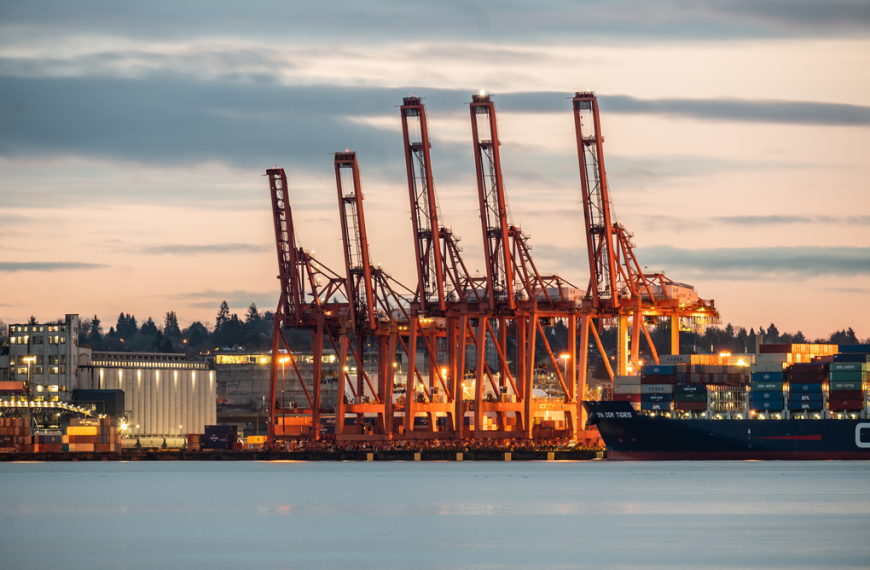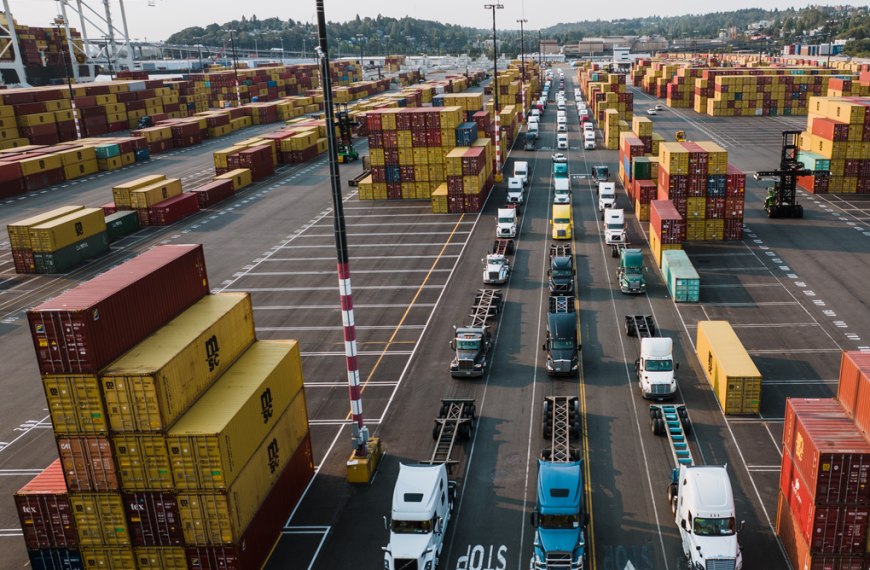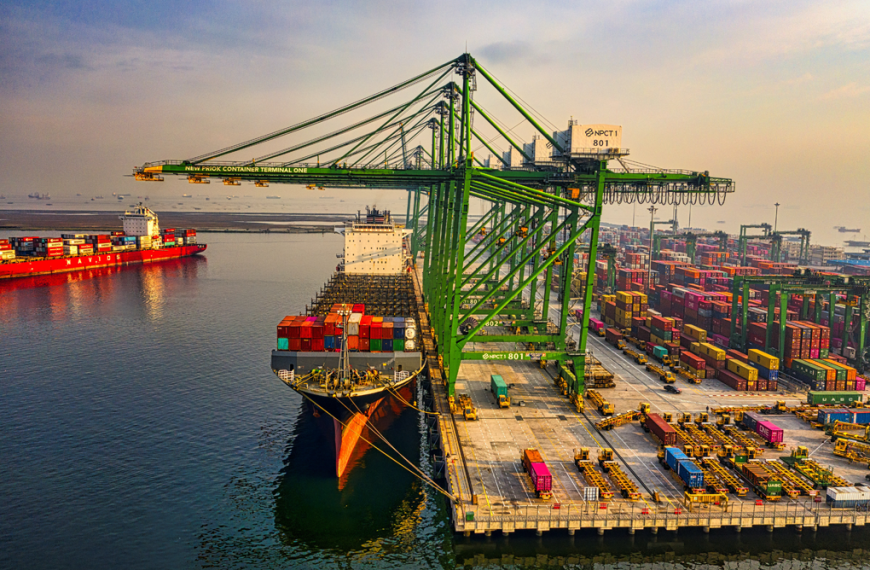Discover the top practices for eco-friendly freight transportation, including sustainable packaging, collaborative partnerships, and regulatory incentives.
In an era where environmental consciousness is taking center stage, the freight transportation industry finds itself at a critical crossroads. As the demand for efficient and eco-conscious freight logistics continues to rise, companies must explore and adopt best practices that prioritize sustainability without compromising operational effectiveness.
In this article, we embark on a journey into the world of eco-friendly freight transportation, uncovering innovative approaches that are shaping the industry’s future while minimizing its ecological footprint.
- The Urgency of Sustainable Freight Logistics
- Embracing the Green Revolution: Best Practices for Eco-friendly Freight Transportation
- Optimizing Efficiency: The Key to Eco-friendly Freight Transportation
- Powering the Future: Alternative Fuels and Energy Sources in Eco-friendly Freight Transportation
- Smart Freight Management Systems: Revolutionizing Eco-friendly Freight Transportation
- The Rise of Smart Freight Management Systems
- The Need for Smarter Solutions in Freight Transportation
- Unleashing the Power of Smart Freight Management Systems
- 1. Real-time Data Analytics: Navigating Towards Efficiency
- 2. Intelligent Route Optimization: Paving the Way for Efficiency
- 3. IoT-enabled Asset Tracking: Enhancing Visibility and Accountability
- 4. Collaboration and Integration: Uniting Stakeholders for Sustainable Success
- 5. Intelligent Warehouse Management: Maximizing Efficiency at Every Step
- Sustainable Packaging and Materials: Paving the Way for Eco-friendly Freight Transportation
- Embracing Sustainability in Freight Transportation
- The Need for Sustainable Packaging and Materials
- Collaborative Supply Chain Partnerships: Driving Eco-friendly Freight Transportation
- The Power of Collaboration in Eco-friendly Freight Transportation
- The Need for Collaborative Supply Chain Partnerships
- Unleashing the Power of Collaborative Partnerships
- 1. Shared Sustainability Goals: Aligning for a Greener Future
- 2. Information Sharing and Transparency: Building Trust and Visibility
- 3. Supplier Collaboration: Selecting Sustainable Partners
- 4. Joint Operational Optimization: Efficiency for a Sustainable Future
- 5. Continuous Improvement and Innovation: Driving Change Together
- Conclusion: A Journey Towards Sustainable Freight Transportation
- Regulatory Initiatives and Incentives: Fueling Eco-friendly Freight Transportation
- Embracing Regulatory Support for Eco-friendly Freight Transportation
- The Need for Regulatory Support and Incentives
- Unleashing the Power of Regulatory Initiatives and Incentives
- 1. Emission Standards and Regulations: Paving the Way for Cleaner Air
- 2. Green Freight Programs: Collaborating for Sustainable Success
- 3. Carbon Pricing and Offsetting: Valuing Environmental Impact
- 4. Grants and Funding: Empowering Sustainable Innovation
- 5. Public-Private Partnerships: Collaborating for Change
- Conclusion: Embracing Regulatory Support for a Sustainable Future
The Urgency of Sustainable Freight Logistics
Freight transportation plays an indispensable role in global commerce, enabling the movement of goods across vast distances. However, the environmental impact of this industry cannot be overlooked. With growing concerns about climate change, air pollution, and resource depletion, there is an urgent need for transformative practices that address these challenges head-on.

Embracing the Green Revolution: Best Practices for Eco-friendly Freight Transportation
To ensure a sustainable and greener future, the freight logistics industry must embrace a set of best practices. These practices leverage cutting-edge technologies, alternative energy sources, and collaborative efforts among stakeholders. Let’s explore some of the key strategies that shape the path towards eco-friendly freight transportation:
1. Embrace Technological Innovations
- Utilize advanced freight logistics systems powered by real-time data analytics and artificial intelligence.
- Optimize routes, reduce fuel consumption, and minimize empty miles using intelligent routing algorithms.
- Embrace smart sensors and Internet of Things (IoT) devices for efficient tracking and monitoring of freight shipments.
2. Fuelling Transformation: Alternative Energy Sources
- Shift away from traditional fossil fuels and explore sustainable alternatives.
- Invest in electric vehicles, hybrid engines, and vehicles powered by renewable energy sources.
- Adopt clean energy solutions such as biofuels and hydrogen-powered engines to reduce carbon emissions.
3. Sustainable Packaging: A Responsible Approach
- Choose eco-friendly packaging materials that are recyclable or made from sustainable sources.
- Minimize packaging waste and promote the use of reusable containers.
- Educate customers about the importance of sustainable packaging choices and their positive impact on the environment.
4. Collaboration for a Sustainable Supply Chain
- Foster collaborative partnerships among stakeholders in the supply chain, including manufacturers, freight forwarders, and customers.
- Share data, insights, and best practices to optimize freight transportation operations.
- Consolidate shipments and promote shared transportation to reduce empty miles and overall environmental impact.
5. Regulatory Compliance and Industry Certifications
- Stay informed about local and international regulations related to emissions, fuel efficiency, and sustainable transportation.
- Comply with industry standards and certifications that promote eco-friendly practices.
- Participate in voluntary programs and initiatives that highlight your commitment to sustainability.
Paving the Way for Sustainable Freight Transportation
As the world becomes increasingly aware of the environmental challenges we face, the freight transportation industry must play its part in minimizing its ecological footprint. By embracing eco-friendly practices and technologies, adopting alternative energy sources, implementing sustainable packaging, fostering collaboration, and complying with regulations, companies can pave the way for a greener and more sustainable future in freight logistics.
Remember, the choices we make today shape the world we will inherit tomorrow. Together, we can build a brighter and more eco-friendly future for freight transportation.
Join the green revolution in freight logistics and embark on a journey towards a sustainable and greener tomorrow!
Optimizing Efficiency: The Key to Eco-friendly Freight Transportation
Unleashing the Power of Efficient Route Planning and Optimization in Freight Logistics
The Quest for Eco-friendly Freight Transportation
In the pursuit of a greener future, the freight transportation industry stands at the forefront of innovation. Among the various strategies employed, efficient route planning and optimization emerge as vital pillars for achieving eco-friendly freight transportation. In this article, we delve into the realm of route optimization and unveil its transformative potential in reducing environmental impact while enhancing operational efficiency in the realm of freight logistics.
The Art of Efficient Route Planning and Optimization
Efficient route planning and optimization serve as a driving force behind sustainable freight transportation practices. By employing cutting-edge technologies and adopting intelligent strategies, businesses can minimize fuel consumption, reduce greenhouse gas emissions, and optimize the utilization of resources.
Unleashing the Power of Route Optimization: Best Practices
To embark on a journey towards eco-friendly freight transportation, consider incorporating the following best practices for efficient route planning and optimization:
1. Embrace Technology: The Navigator of Success
- Leverage advanced freight logistics software and route optimization tools that harness the power of data analytics, machine learning, and artificial intelligence.
- Utilize real-time traffic data and historical patterns to identify optimal routes, avoid congested areas, and reduce transit time.
- Integrate GPS tracking systems to monitor and adjust routes dynamically based on real-time conditions.
2. Consolidation: Uniting Shipments for a Greener Future
- Implement consolidation strategies to optimize load capacity and reduce empty miles.
- Collaborate with other businesses to share transportation resources and decrease the number of vehicles on the road.
- Utilize shared warehousing facilities strategically located to maximize efficiency and minimize transportation distances.
3. Last-mile Optimization: The Final Frontier
- Devise innovative last-mile delivery solutions to enhance efficiency and reduce emissions.
- Embrace alternative delivery methods such as electric vehicles, drones, or bike couriers for short-distance deliveries.
- Utilize route optimization algorithms specifically tailored for last-mile operations to minimize travel distances and enhance customer satisfaction.
4. Eco-friendly Fuel Choices: Powering a Sustainable Journey
- Transition to alternative fuels, such as biofuels or electric power, to reduce reliance on traditional fossil fuels.
- Integrate renewable energy sources, such as solar panels, for charging electric vehicle fleets.
- Collaborate with fuel providers to ensure a reliable supply of eco-friendly fuels.
5. Data-driven Decision Making: The Roadmap to Success
- Leverage data analytics to analyze historical patterns, identify bottlenecks, and optimize route efficiency.
- Monitor and measure key performance indicators (KPIs) related to fuel consumption, emissions, and operational efficiency.
- Continuously refine and adapt route plans based on data insights to achieve ongoing improvement.
Efficient route planning and optimization hold immense potential in shaping the landscape of eco-friendly freight transportation. By embracing technology, consolidating shipments, optimizing last-mile delivery, choosing eco-friendly fuels, and leveraging data-driven decision making, businesses can create a roadmap to a greener and more sustainable future in freight logistics.
Remember, the journey towards sustainability begins with every mile traveled.

Powering the Future: Alternative Fuels and Energy Sources in Eco-friendly Freight Transportation
Revolutionizing the Freight Transportation Landscape with Sustainable Energy Solutions
Embracing Sustainable Energy in Freight Transportation
In the quest for a greener future, the freight transportation industry is steering towards innovative practices that prioritize sustainability. Among these practices, the adoption of alternative fuels and energy sources takes center stage, revolutionizing the realm of freight logistics. In this article, we explore the transformative power of sustainable energy solutions and their pivotal role in advancing eco-friendly freight transportation.
The Need for Sustainable Energy Solutions
Freight transportation is a vital engine of global trade, but it also contributes significantly to carbon emissions and environmental degradation. To address these challenges, the industry must embrace alternative fuels and energy sources that minimize the ecological footprint while maintaining operational efficiency.
Unleashing the Potential: Best Practices in Alternative Fuels and Energy Sources
To pave the way for eco-friendly freight transportation, consider incorporating the following best practices for utilizing alternative fuels and energy sources:
1. Electric Vehicles: Charging Towards a Sustainable Future
- Embrace the use of electric vehicles (EVs) for freight transportation, reducing reliance on fossil fuels and decreasing emissions.
- Install charging infrastructure at distribution centers and along transportation routes to support the adoption of EVs.
- Leverage advancements in battery technology to enhance the range, capacity, and charging speed of electric freight vehicles.
2. Biofuels: Harnessing Nature’s Potential
- Explore biofuels derived from renewable sources, such as ethanol and biodiesel, as viable alternatives to traditional fossil fuels.
- Collaborate with biofuel producers and suppliers to ensure a reliable and sustainable supply chain.
- Optimize engine performance and fuel efficiency by blending biofuels with conventional fuels.
3. Hydrogen Fuel Cells: Empowering Green Transportation
- Invest in hydrogen-powered vehicles that produce zero emissions, with water as the only byproduct.
- Establish partnerships with hydrogen fuel providers to ensure a consistent supply of this eco-friendly energy source.
- Create a hydrogen refueling infrastructure that supports the adoption and widespread use of hydrogen fuel cell vehicles.
4. Solar and Renewable Energy Integration: Harnessing the Sun’s Power
- Install solar panels on transportation facilities to generate renewable energy for charging electric vehicles and powering operations.
- Leverage renewable energy sources, such as wind or geothermal power, to reduce carbon emissions throughout the supply chain.
- Implement energy management systems to optimize the usage of renewable energy and minimize wastage.
5. Energy Efficiency and Optimization: The Path to Sustainability
- Implement energy-efficient practices in freight transportation operations, such as idle reduction technologies and aerodynamic vehicle design.
- Explore innovative technologies, like regenerative braking and energy recovery systems, to maximize energy efficiency.
- Optimize routes, vehicle utilization, and load capacity to reduce fuel consumption and emissions.
Embracing alternative fuels and energy sources is the key to unlocking a sustainable future in freight logistics. By integrating electric vehicles, biofuels, hydrogen fuel cells, solar power, and renewable energy, businesses can significantly reduce their environmental impact while maintaining the efficiency and reliability of freight transportation operations.
Remember, the choices we make today shape the energy landscape of tomorrow.
Harness the power of alternative fuels and energy sources, and drive the transition towards eco-friendly freight transportation today!

Smart Freight Management Systems: Revolutionizing Eco-friendly Freight Transportation
Unlocking Efficiency and Sustainability in the World of Freight Logistics
The Rise of Smart Freight Management Systems
In the age of digital transformation, the freight transportation industry is witnessing a paradigm shift towards innovative practices that prioritize sustainability. Among these game-changing technologies, smart freight management systems have emerged as a powerful tool for achieving eco-friendly freight transportation. In this article, we explore the transformative potential of these systems and their role in revolutionizing the world of freight logistics.
The Need for Smarter Solutions in Freight Transportation
Freight transportation serves as the backbone of global commerce, but it also poses significant environmental challenges. The industry must seek sustainable and efficient solutions to minimize its ecological footprint while meeting the ever-increasing demands of the market.
Unleashing the Power of Smart Freight Management Systems
Smart freight management systems encompass a range of advanced technologies that optimize operations, enhance visibility, and promote eco-friendly practices. Let’s delve into the best practices that highlight the transformative power of these systems:
1. Real-time Data Analytics: Navigating Towards Efficiency
- Harness the power of real-time data analytics to gain valuable insights into freight transportation operations.
- Utilize advanced algorithms to optimize routing, minimize fuel consumption, and reduce emissions.
- Monitor key performance indicators (KPIs) such as fuel efficiency, vehicle utilization, and delivery time to drive continuous improvement.
2. Intelligent Route Optimization: Paving the Way for Efficiency
- Leverage route optimization algorithms that consider various factors, including traffic conditions, weather, and delivery priorities.
- Minimize empty miles and fuel consumption by identifying the most efficient routes and avoiding congestion.
- Dynamically adjust routes based on real-time data to optimize delivery schedules and reduce transit times.
3. IoT-enabled Asset Tracking: Enhancing Visibility and Accountability
- Utilize Internet of Things (IoT) devices and sensors to track and monitor freight shipments in real time.
- Improve visibility and transparency across the supply chain, ensuring timely and secure deliveries.
- Enable proactive decision-making by identifying bottlenecks, delays, or potential disruptions in the transportation process.
4. Collaboration and Integration: Uniting Stakeholders for Sustainable Success
- Foster collaboration among various stakeholders, including manufacturers, carriers, and customers, through integrated platforms.
- Streamline communication, data sharing, and coordination to optimize freight transportation operations.
- Facilitate seamless integration between different systems and technologies to enhance efficiency and reduce redundancies.
5. Intelligent Warehouse Management: Maximizing Efficiency at Every Step
- Implement smart warehouse management systems that optimize inventory control, order fulfillment, and storage capacity.
- Utilize automation and robotics to streamline processes and reduce energy consumption.
- Minimize material waste and packaging through intelligent inventory planning and sustainable packaging practices.
Smart freight management systems have the potential to revolutionize the landscape of freight logistics. By harnessing the power of real-time data analytics, intelligent route optimization, IoT-enabled asset tracking, collaboration, and intelligent warehouse management, businesses can achieve eco-friendly and efficient freight transportation operations.
Sustainable Packaging and Materials: Paving the Way for Eco-friendly Freight Transportation
Revolutionizing Freight Logistics with Environmentally Conscious Packaging Solutions
Embracing Sustainability in Freight Transportation
As the world embraces the urgency of sustainable practices, the freight transportation industry stands at the forefront of change. Among the key pillars of eco-friendly freight transportation, sustainable packaging and materials play a pivotal role. In this article, we delve into the transformative potential of sustainable packaging solutions, their impact on freight logistics, and the steps businesses can take to embrace a greener future.
The Need for Sustainable Packaging and Materials
Freight transportation encompasses the movement of goods on a massive scale, resulting in significant environmental implications. Sustainable packaging and materials serve as catalysts for reducing waste, minimizing carbon emissions, and preserving natural resources.
Unleashing the Power of Sustainable Packaging Solutions
To pave the way for eco-friendly freight transportation, consider implementing the following best practices for sustainable packaging and materials:
1. Mindful Material Selection: Choosing the Green Path
- Opt for packaging materials that are recyclable, biodegradable, or made from renewable resources.
- Explore innovative alternatives, such as plant-based plastics, compostable materials, or recycled content.
- Collaborate with suppliers and manufacturers committed to sustainable sourcing and production practices.
2. Right-sizing Packaging: Efficiency in Every Box
- Optimize packaging dimensions to minimize material usage and maximize cargo space utilization.
- Utilize technology and data analytics to determine the optimal size and configuration for each shipment.
- Implement packaging design techniques that reduce weight without compromising product protection.
3. Eco-friendly Cushioning and Fillers: Embrace the Green Buffer
- Replace traditional packaging materials, such as Styrofoam or bubble wrap, with eco-friendly alternatives.
- Utilize biodegradable and compostable cushioning materials made from recycled or renewable sources.
- Explore innovative solutions, like air pillows or molded pulp, to protect goods during transit sustainably.
4. Returnable and Reusable Packaging: Closing the Loop
- Implement returnable packaging systems that allow for multiple-use cycles and minimize waste.
- Encourage customers and partners to participate in packaging return and reuse programs.
- Optimize reverse logistics to efficiently manage the return and refurbishment of reusable packaging.
5. Collaborative Supply Chain Efforts: Uniting for Sustainability
- Foster collaboration with suppliers, carriers, and customers to establish sustainable packaging guidelines.
- Share best practices and knowledge to promote awareness and encourage adoption of sustainable packaging solutions.
- Consider implementing joint initiatives, such as shared pallets or reusable containers, to reduce waste collectively.
Driving Change in Freight Transportation
Sustainable packaging and materials are key drivers in the transition towards eco-friendly freight transportation. By selecting mindful materials, right-sizing packaging, embracing eco-friendly cushioning, implementing returnable systems, and fostering collaboration throughout the supply chain, businesses can significantly reduce their environmental impact and contribute to a more sustainable future.
Remember, the small choices we make in packaging today can drive significant change for the planet tomorrow.
Embrace the power of sustainable packaging and materials, and lead the way in eco-friendly freight transportation today!
Collaborative Supply Chain Partnerships: Driving Eco-friendly Freight Transportation
Unlocking Sustainability and Efficiency through Collaboration in Freight Logistics
The Power of Collaboration in Eco-friendly Freight Transportation
In the pursuit of a greener future, the freight transportation industry is increasingly recognizing the importance of collaborative supply chain partnerships. By fostering collaboration among stakeholders, businesses can drive sustainable practices, enhance operational efficiency, and contribute to eco-friendly freight logistics. In this article, we explore the transformative potential of collaborative partnerships and their role in shaping the landscape of eco-friendly freight transportation.
The Need for Collaborative Supply Chain Partnerships
Freight transportation involves a complex network of suppliers, carriers, manufacturers, and customers. To tackle environmental challenges and optimize operations, collaboration and partnership are essential. By working together, stakeholders can pool resources, share expertise, and implement sustainable solutions that benefit the entire supply chain.
Unleashing the Power of Collaborative Partnerships
To drive eco-friendly freight transportation, consider incorporating the following best practices for collaborative supply chain partnerships:
1. Shared Sustainability Goals: Aligning for a Greener Future
- Establish shared sustainability goals and values among all supply chain partners.
- Foster open communication and collaboration to ensure everyone is working towards the same objectives.
- Develop key performance indicators (KPIs) to measure and track progress towards sustainability targets.
2. Information Sharing and Transparency: Building Trust and Visibility
- Share relevant data, including carbon emissions, energy consumption, and waste generation, across the supply chain.
- Leverage technology and digital platforms to facilitate real-time information sharing and enhance visibility.
- Promote transparency in supplier selection, procurement, and operations to ensure adherence to sustainable practices.
3. Supplier Collaboration: Selecting Sustainable Partners
- Collaborate with suppliers who share a commitment to sustainability and eco-friendly practices.
- Evaluate suppliers based on their environmental credentials, such as green certifications or sustainable sourcing.
- Engage in open dialogue with suppliers to encourage innovation and explore sustainable alternatives together.
4. Joint Operational Optimization: Efficiency for a Sustainable Future
- Collaborate on operational optimization initiatives, such as route planning, load consolidation, and warehouse management.
- Share best practices and knowledge to streamline processes and reduce waste throughout the supply chain.
- Explore technology solutions, like shared transportation platforms or warehouse sharing, to maximize efficiency.
5. Continuous Improvement and Innovation: Driving Change Together
- Encourage continuous improvement through regular feedback, performance reviews, and shared learnings.
- Foster a culture of innovation by promoting cross-functional collaboration and creative problem-solving.
- Invest in research and development to explore new sustainable technologies and practices for freight transportation.
Conclusion: A Journey Towards Sustainable Freight Transportation
Collaborative supply chain partnerships are the driving force behind eco-friendly freight transportation. By aligning sustainability goals, sharing information, collaborating with suppliers, optimizing operations, and fostering a culture of continuous improvement, businesses can create a sustainable and efficient freight logistics ecosystem.
Remember, true transformation happens when we work together towards a common goal.
Embrace the power of collaborative supply chain partnerships and drive the change towards eco-friendly freight transportation today!
Regulatory Initiatives and Incentives: Fueling Eco-friendly Freight Transportation
Navigating the Regulatory Landscape for Sustainable Freight Logistics
Embracing Regulatory Support for Eco-friendly Freight Transportation
In the quest for a greener future, regulatory initiatives and incentives have emerged as catalysts for eco-friendly freight transportation. Governments and organizations worldwide are implementing policies and offering incentives to promote sustainable practices in freight transportation and logistics. In this article, we explore the transformative power of regulatory measures and incentives, and how they are shaping the landscape of sustainable freight logistics.
The Need for Regulatory Support and Incentives
Freight transportation plays a vital role in global trade, but it also contributes to environmental challenges such as carbon emissions and air pollution. Regulatory initiatives and incentives serve as important tools to mitigate these impacts, drive innovation, and encourage businesses to adopt eco-friendly practices.
Unleashing the Power of Regulatory Initiatives and Incentives
To foster eco-friendly freight transportation, consider the following regulatory initiatives and incentives that can fuel sustainability in the industry:
1. Emission Standards and Regulations: Paving the Way for Cleaner Air
- Implement stringent emission standards for vehicles, encouraging the use of low-emission and zero-emission technologies.
- Mandate the adoption of eco-friendly fuels, such as biodiesel or hydrogen, to reduce greenhouse gas emissions.
- Provide incentives and tax breaks for businesses that invest in cleaner technologies and vehicles.
2. Green Freight Programs: Collaborating for Sustainable Success
- Establish green freight programs that bring together industry stakeholders to set sustainability targets and guidelines.
- Provide resources, training, and technical assistance to support businesses in adopting eco-friendly practices.
- Recognize and reward companies that demonstrate exceptional environmental performance through certifications or awards.
3. Carbon Pricing and Offsetting: Valuing Environmental Impact
- Implement carbon pricing mechanisms that assign a monetary value to carbon emissions in freight transportation.
- Encourage businesses to invest in carbon offset projects to compensate for their emissions.
- Create market-based incentives for companies to reduce emissions and adopt cleaner technologies.
4. Grants and Funding: Empowering Sustainable Innovation
- Offer grants and funding opportunities for research and development of eco-friendly technologies and practices.
- Support pilot projects and demonstrations that showcase the feasibility and benefits of sustainable freight transportation.
- Encourage collaboration between academia, industry, and government to drive innovation and knowledge sharing.
5. Public-Private Partnerships: Collaborating for Change
- Foster collaboration between government agencies, industry associations, and private companies to drive sustainable freight transportation.
- Pool resources, expertise, and data to develop comprehensive strategies and roadmaps for eco-friendly logistics.
- Share best practices, success stories, and lessons learned to inspire and guide others in adopting sustainable practices.
Conclusion: Embracing Regulatory Support for a Sustainable Future
Regulatory initiatives and incentives play a pivotal role in accelerating the transition towards eco-friendly freight transportation. Through emission standards, green freight programs, carbon pricing, grants, and public-private partnerships, businesses can embrace sustainable practices, reduce their environmental footprint, and contribute to a greener future.
Remember, regulatory support is not just a compliance burden; it’s an opportunity for innovation and growth.
Embrace the power of regulatory initiatives and incentives, and drive the transformation towards eco-friendly freight transportation today!













